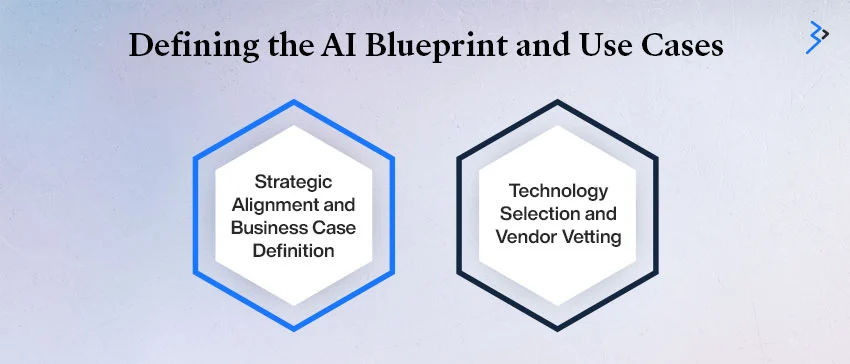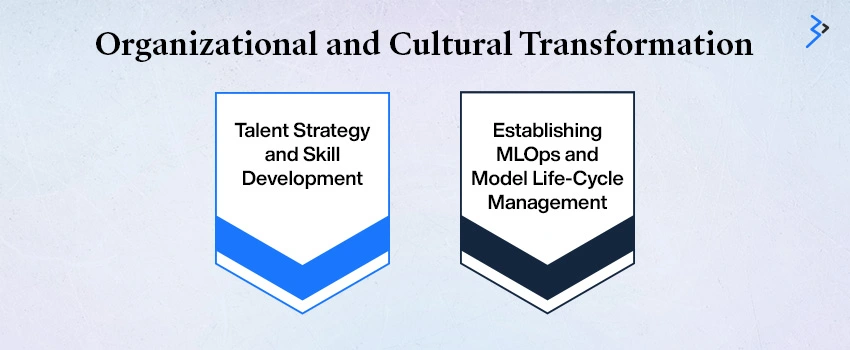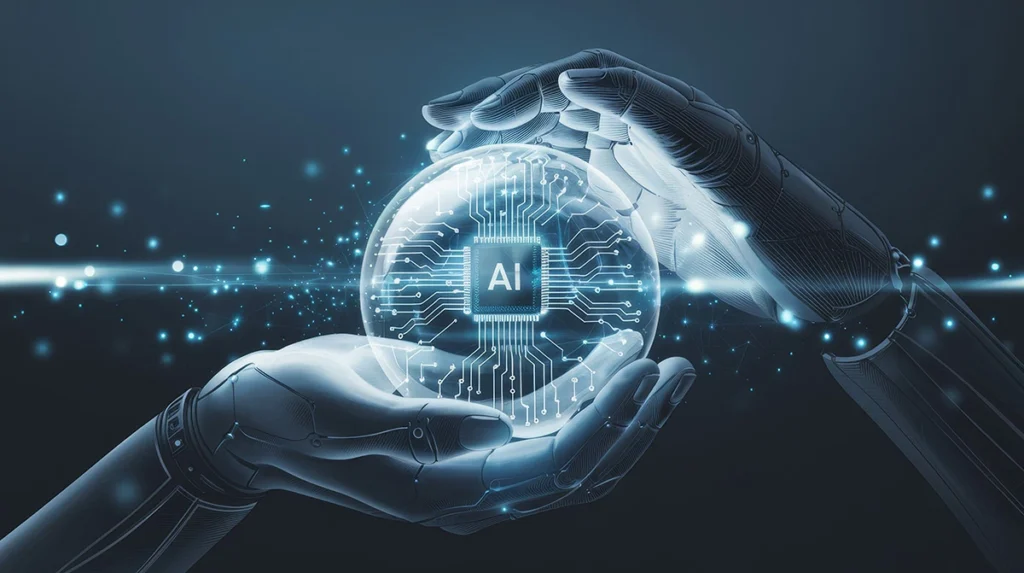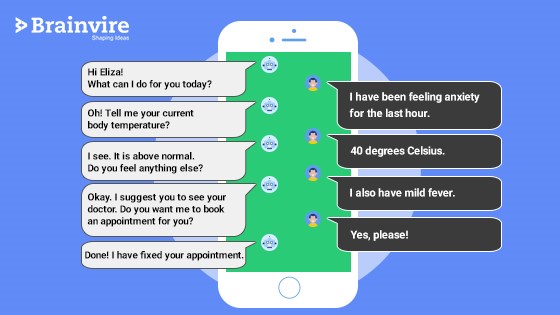We live in a time when AI is no longer just a futuristic idea; it’s a key player in achieving business success today. Companies across all industries are realizing that embracing AI isn’t just helpful; it’s essential for unlocking new efficiencies, personalizing experiences, and staying ahead of the competition.
But here’s the catch: diving into AI without a solid plan can lead to wasted money and disrupted operations. So, what does it really mean to integrate AI?
Integrating AI is not just about loading new software onto your systems; it’s about rethinking how your business operates. The approach affects everything from data management to organizational structure. Taking the time to prepare is absolutely critical for any large company that wants to embark on this transformative journey.
This guide will provide a clear, step-by-step roadmap to prepare your enterprise for successful AI integration and scaling. Before you roll out your first AI solution, examine the key areas you must focus on.
Phase 1 | Assessing Foundational Readiness

Before you evaluate specific AI tools or use cases, you need to conduct a deep audit of your internal infrastructure and processes. It is crucial to ensure that your enterprise environment remains stable, secure, and capable of hosting complex machine learning workloads.
1. Data Strategy and Governance Audit
AI systems are entirely dependent on high-quality data. Thoroughly auditing your data landscape is the first step in preparing your enterprise for AI integration.
Data Quality and Cleansing
Are your data sources fragmented, messy, or inconsistent? AI learns from the data it consumes, and “garbage in means garbage out.” A comprehensive data cleansing project is essential to standardize formats, fill gaps, and eliminate redundancies across all source systems.
Centralized Data Infrastructure
AI models require access to vast, organized datasets. Many legacy enterprises struggle with data locked in silos (e.g., separate systems for CRM Development Services, ERP, and HR). You need to consolidate this information into a unified, accessible platform, typically a data lake or a modern cloud-based data warehouse.
Governance and Compliance
Before deploying AI, you must define clear policies regarding data privacy, security, and ethical use. Ensuring compliance is especially important for regulated industries such as finance and healthcare. Your governance framework should address global regulations like GDPR and CCPA, ensuring your AI systems operate legally and ethically.
According to an MIT Sloan Management Review article, 70% of companies report minimal to no impact from their investments in AI, largely due to data quality and integration issues, underscoring the necessity of this preparatory step.

2. Infrastructure and Cloud Readiness
The computational demands of training and running complex AI models are significant, and your existing IT infrastructure may not be sufficient.
Compute Power Assessment
Evaluate your current hardware, specifically the need for GPUs (Graphics Processing Units) or TPUs (Tensor Processing Units), which are essential for machine learning development company. Determine whether on-premise solutions or cloud computing resources (like AWS, Azure, or Google Cloud) are more scalable and cost-effective for your specific workloads.
Scalability and Elasticity
AI projects often start small and scale rapidly. Your infrastructure must be designed for elasticity, letting you provision additional computing and storage resources quickly without manual intervention. Cloud platforms are generally superior in offering this on-demand scalability.
Security Posture
AI introduces new security vulnerabilities, particularly model tampering and data leakage. Ensure your security protocols are updated to protect data streams, API endpoints, and the deployed models from sophisticated cyber threats.
Phase 2 | Defining the AI Blueprint and Use Cases

A clearly defined business value must drive the integration of SAP-HCM or any major enterprise system. Similarly, your AI integration strategy should prioritize use cases that deliver the highest ROI and are critical to strategic growth.
1. Strategic Alignment and Business Case Definition
Do not implement AI just because your competitors are doing it. Every AI project should start with a clear problem statement and a measurable business objective.
Identify Pain Points
Collaborate with business unit leaders (e.g., Marketing, Supply Chain, Finance) to identify bottlenecks, costly processes, and areas needing better personalization.
Prioritize High-Value Use Cases
Focus on projects that offer the most significant competitive advantage. Manufacturers can utilize these strategies for predictive maintenance, retailers can apply them for demand forecasting, and financial institutions can implement them to enhance fraud detection.
Proof-of-Concept (POC) Planning
Pick one manageable use case that isn’t too complicated to integrate but has the potential to deliver precise results. A successful proof of concept (POC) can help build confidence, show that your infrastructure is solid, and get everyone on board for future projects. It’s a great way to lay a solid foundation.
2. Technology Selection and Vendor Vetting
Choosing the right technology stack and implementation partner is crucial for the success of SAP human capital management modules or any AI integration.
Platform Evaluation
Decide between building proprietary models in-house or leveraging pre-built AI services (e.g., natural language processing, computer vision APIs). Evaluate platforms like the SAP AI Business Services or specialized third-party tools based on their compatibility with your current stack.
Integration Planning
The new AI system must integrate seamlessly with existing enterprise software, such as your ERP, CRM, and SAP Human Capital Management HCM systems. Define the integration points and API requirements early in the planning phase to avoid costly rework later.
Partner Expertise
Partner with a firm with deep domain expertise in AI/ML engineering and your core business processes. A knowledgeable partner understands the nuances of SAP HCM data and how to leverage it ethically and securely.
Phase 3 | Organizational and Cultural Transformation

Technology is only half the battle; people and processes make or break any major enterprise transformation. AI integration fundamentally changes how people work.
1. Talent Strategy and Skill Development
The introduction of AI will change job roles, requiring new skills and competencies across the organization. A crucial aspect of SAP’s involvement in Human Resources planning is its role in facilitating effective planning processes.
Identify New Roles
Recognize the need for specialized roles, such as AI ethicists, data scientists, and Machine Learning Operations (MLOps) engineers, to manage and maintain the AI infrastructure.
Reskilling and Upskilling
Invest heavily in training existing employees. Your marketing team needs to understand how to interpret AI-driven personalization insights, and your finance team must trust the predictions from the AI forecasting models. This proactive approach alleviates fear and drives adoption.
Change Management
Address employee fears directly. AI integration enhances human abilities by automating repetitive tasks. Such an approach enables individuals to concentrate on tackling complex problems and engaging in creative work.
According to the World Economic Forum’s Future of Jobs Report, organizations that invest in reskilling their workforce for AI are substantially more likely to achieve significant business gains from their AI initiatives.
2. Establishing MLOps and Model Life-Cycle Management
Unlike traditional software, AI models degrade over time as real-world data shifts. Managing this “drift” requires a disciplined MLOps (Machine Learning Operations) framework.
Continuous Monitoring
Establish tools and processes to continuously monitor the performance of your deployed models against business metrics. Is the fraud detection model still accurate? Is the prediction model suffering from data drift?
Automated Retraining
Your MLOps pipeline should provide access for the automated re-validation, retraining, and redeployment of models. Ensuring your AI systems remain relevant and accurate eliminates the need for constant manual intervention.
Transparency and Explainability
For sensitive applications (e.g., loan approvals, hiring), ensure your model’s decisions are explainable. Ensuring compliance with regulations and fostering trust among users is crucial.
Conclusion: Partnering for Sustainable AI Transformation
Preparing your enterprise for AI integration is an extensive process. It’s not merely a short-term solution; it’s a commitment that requires collaboration among your IT team, various business units, and external specialists. You’ll want to plan carefully, implement solid data governance, and work on changing your organization’s culture. Stacking AI on top of tools like SAP Human Capital Management isn’t a cut. The integration needs to be smooth and strategic.
That’s where we come in. At Brainvire, we’re all about helping large enterprises navigate this process step by step. Our team works hard to prepare your data architecture, cloud setup, and company culture for a seamless and impactful AI adoption. We aim to provide real business results, turning the complexities of SAP HCM data and advanced analytics into a competitive edge for your company.
Let’s team up and lay down a strong, future-proof foundation for your AI journey.
FAQs
Before deploying AI, enterprises need clean, unified data, a scalable cloud setup, and strong data governance. Leadership alignment and a clear roadmap are also vital to avoid costly missteps.
AI accuracy depends on well-managed data. Robust governance ensures data privacy and compliance with laws like GDPR, and prevents bias, building trust in AI-driven decisions.
Success in AI requires reskilling and upskilling employees to handle new tools and workflows. According to the World Economic Forum’s Future of Jobs Report, firms investing in reskilling see stronger business gains from AI.
MLOps ensures AI models stay accurate and reliable through continuous monitoring, retraining, and deployment, reducing manual maintenance and performance issues.
Brainvire guides enterprises through every AI adoption stage, from data and cloud readiness to SAP HCM integration, ensuring a seamless, scalable, and ROI-focused transformation.
Related Articles
-
Chatbots: Your New Healthcare Assistant
Chatbots, or a talking software programs or smart algorithms which dexterously conduct conversation via auditory or textual methods, are becoming popular and widespread. They have been proving its mettle in
-
Generative Models Unpacked: The Innovations Powering Next-Gen AI
Envision a future where your business can rapidly produce everything it requires, whether it’s marketing strategies, tailored images, or code, within mere hours. This efficiency could revolutionize your operations. In
-
Top AI Workflow Automation Tools
AI workflow automation tools have transformed business processes by automating routine tasks, improving efficiency, and reducing manual errors. These platforms integrate artificial intelligence to streamline workflows, optimize operations, and enhance




